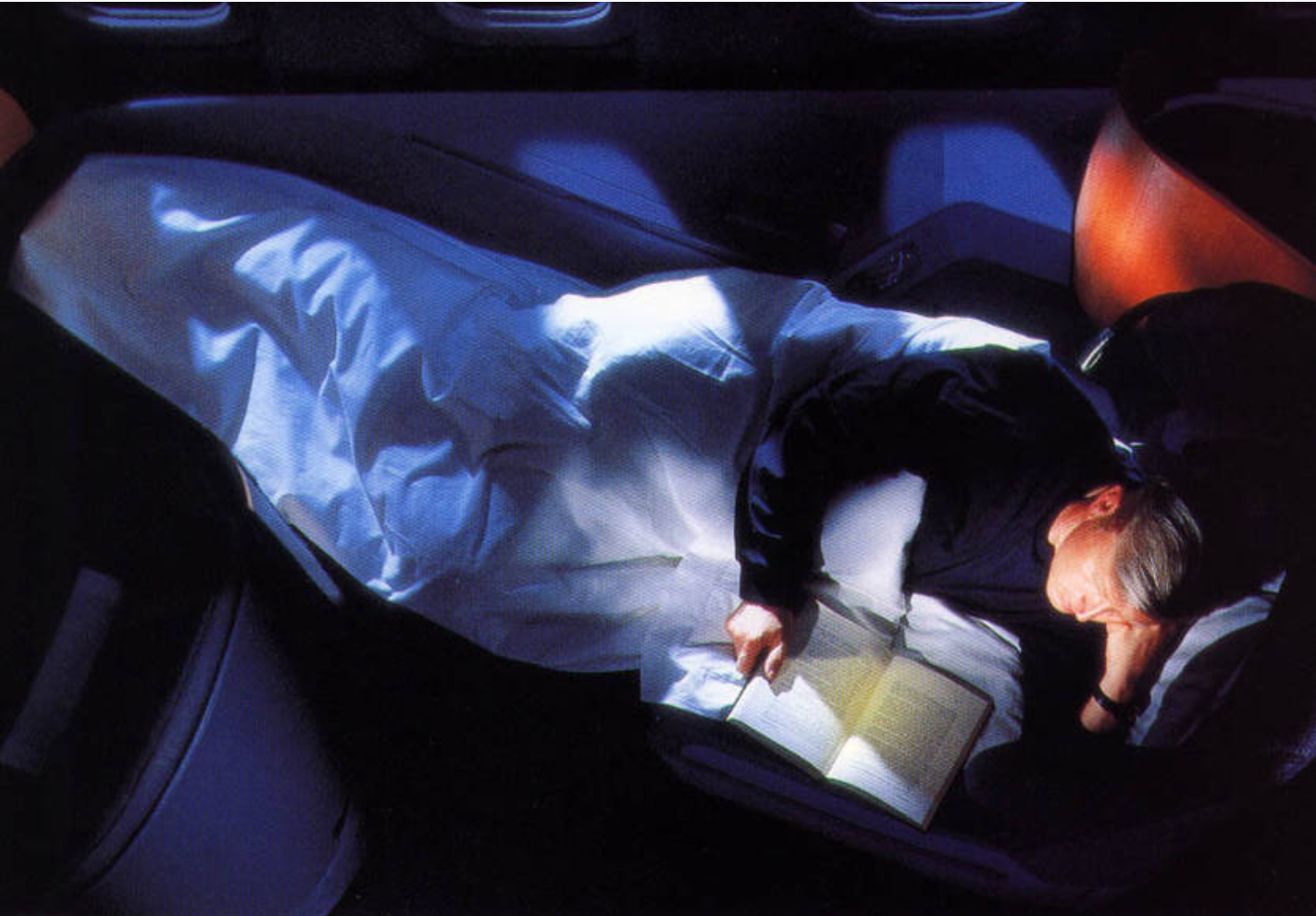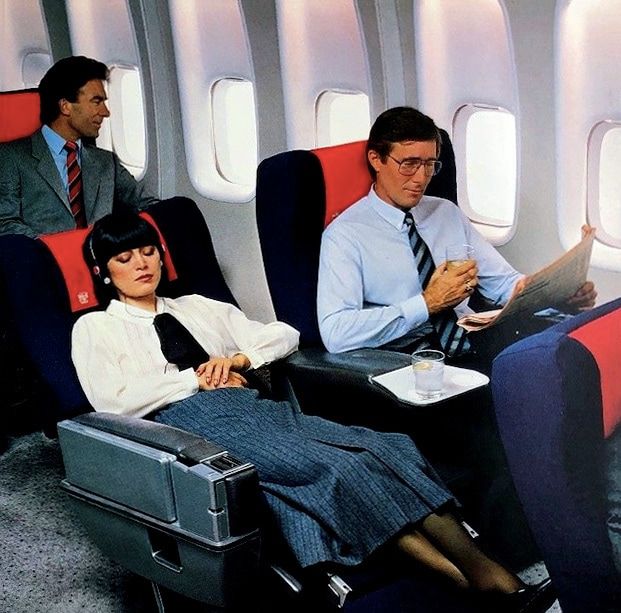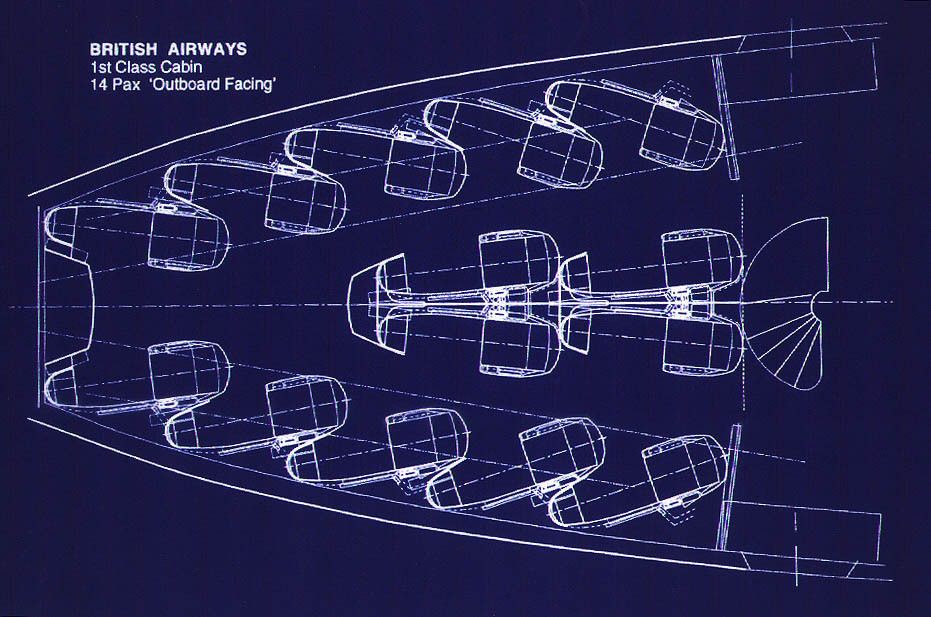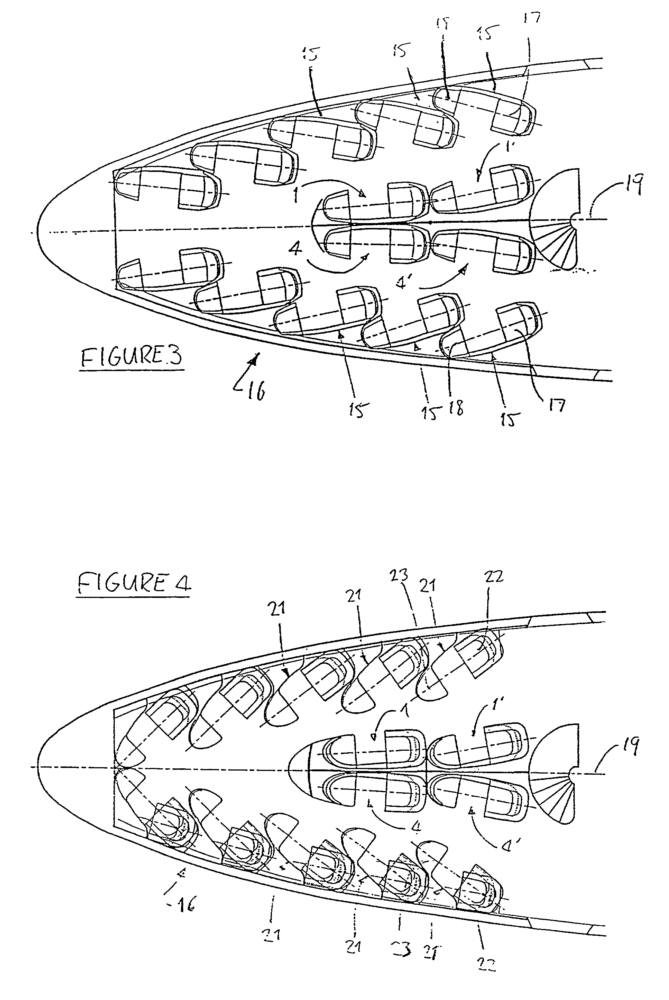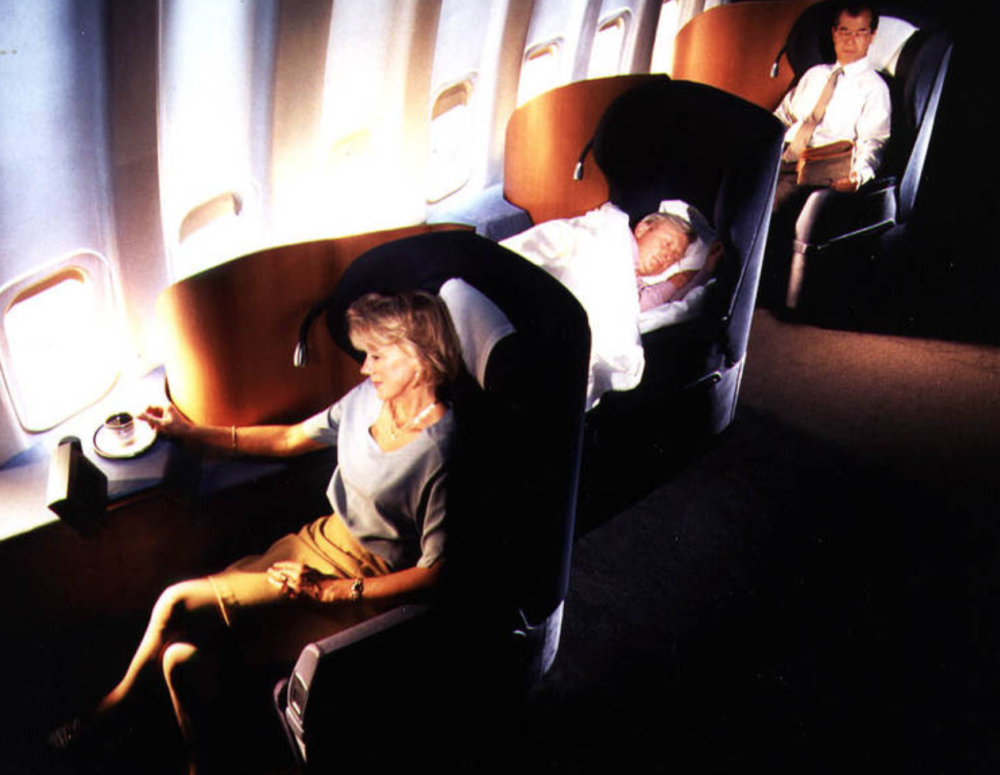Who doesn’t love a herringbone premium cabin? The angled staggered arrangement has become a mainstay of first class and business class cabins all the world over, giving passengers more privacy, more space, and a fully lie-flat experience. Despite all the variations of herringbone cabins seen today, each one has a common ancestor which dates back 25 years.
The story started in 1994 with a First Class product that was developed for British Airways by Acumen Design Associates. The British design firm is the brains behind many of the world’s most luxurious aviation products, from ANA’s ‘The Room’ to Etihad’s ‘The Residence,’ and most recently, the stunning interior of JetBlue’s A321LR.
But among all the glamour of Acumen’s interiors, one product has stood the test of time above all others. Simple Flying sat down with Acumen CEO Ian Dryburgh and Brand Experience Director Michael Crump to discover the legacy of the herringbone seat and how it inspired premium cabin design for decades to come.
Stay informed: Sign up for our daily and weekly aviation news digests.
Designing the world’s first herringbone cabin
Acumen was founded by inventor and transport designer Ian Dryburgh. Having become the first English person to work at Mercedes Benz German design headquarters, Ian went on to form his own multi-disciplinary design company in 1981, working on a diverse range of product, architectural and transport design briefs of all shapes and sizes.
The two met when Michael Crump, who was employed as the Design Manager at British Airways at the time, was tasked with finding an external design agency to reinvent the airline’s most premium product. He noted,
“Back in around ‘94, we looked outside for agencies to come and work on first class. The brief was to radically rethink what first class could be.”
Back then, first class seats were often double recliners that all faced forwards and pitched between 60”- 65”. The concept of direct aisle access had not made it onto the plane, so stepping over another passenger was still a necessity for window-seated fliers. British Airways believed in something better, and found it in Ian’s company, Acumen. Michael recalls,
“Eventually we chose Ian and Acumen, and they came up with the revolution in the sky. It was the ‘First Flying Bed’, where the seats were angled in a chevron arrangement which transformed the market significantly. The innovation was quickly protected by British Airways, which became the mother of all future lay flat premium seating patents, changing the landscape of premium travel from that point on.”
Ian had found inspiration from seeing parked cars in France placed at an angle. What he had designed was the world’s first herringbone configured aircraft cabin, a creation that would become the blueprint for premium cabins for decades to come.
Making history
When Acumen came up with the concept of the herringbone configuration, both Michael and Ian knew they were onto something special. Ian recalls the moment they realized this was a key moment in aircraft interiors,
“It was one of those magic moments. We became aware that we were completely and utterly turning the rulebook upside down. In fact, there wasn't even a rulebook to cover this one. The CAA had to actually create rules to keep up with it.”
The British Airways patented herringbone design was incredibly successful for the airline. However, they didn’t just pioneer the window facing herringbone. Indeed, the team had presented a second, inward-facing arrangement, seven years prior to the configuration flying on Virgin Atlantic.
Market research dictated that the end product for BA would be outward-facing, but the legwork for a more sociable, inward-facing arrangement had been done. Although the patents weren’t strong enough to prevent competition from emerging, it did slow the market response down. More importantly, Acumen’s new take on the premium cabin gave airlines and cabin designers food for thought, as Michael explained,
“The innovation was a seismic shift in the market and the patent slowed down the competitor response – as it forced other designers and airlines to think differently around that ‘grandfather’ patent.”
A design that has stood the test of time
Looking around the premium cabins of today, it’s impossible not to see Acumen’s original design providing the foundation of the modern seat. Although airlines put their own spin on things, tweak elements to reflect their brand and alter the fabrics and peripherals, the fundamental premise of arranging seats in a herringbone fashion has been the foundation of premium travel for 25 years.
Ian noted just how many of today’s cabins are inspired by that original British Airways design, commenting that,
“I believe more than 35%, or more of all premium cabin layouts flying today are derivatives of our original herringbone patents and thinking.”
Fundamentally the invention of a herringbone layout has proved to be something of a eureka moment for the Acumen team. The longevity of the product is a testament to the innovation packaged up for BA, which was then adopted by airlines around the world. Ian quipped,
“When we designed the ‘Bed In The Sky’, both Mike and I had no idea it would fly for over two decades!”
“Most products, they are here today gone tomorrow, within seven to 10 years. It is a prime example of how good ideas can enjoy longevity and market dominance. Quick fix, soundbite designs might make it to a magazine, but that's about where they stay.”
With the herringbone coming up for its 25th birthday this year, perhaps it’s time for a change. Modern materials and design processes open the door to even greater innovation, enabling more outside-the-box thinking to be done. For Acumen, it’s a proud legacy that they hold dear, and rightly so.

